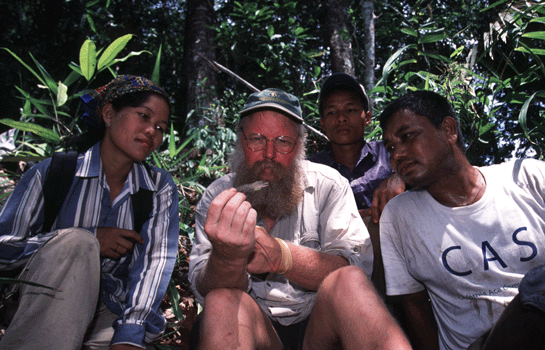The Myanmar Herpetological Survey Project
Survey Sites
| Our project has surveyed in 19 of the country's 34 protected areas: | |||
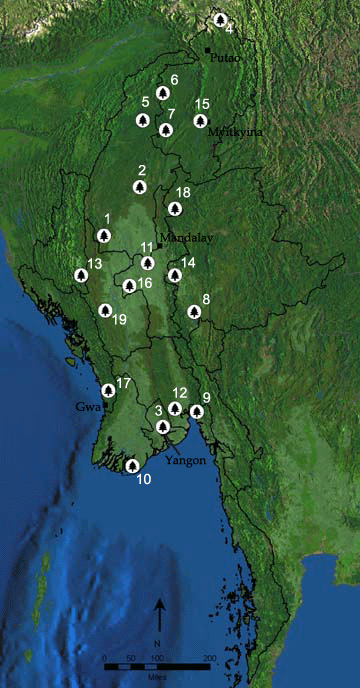 |
1
|
Alaungdaw Kathapa National Park, Sagaing Division | |
|
2
|
Chatthin Wildlife Sanctuary, Sagaing Division | ||
|
3
|
Hlawga Wildlife Park, Yangon Division | ||
|
4
|
Hkakabo Razi Protected Area, Kachin State | ||
|
5
|
Htamanthi Wildlife Sanctuary, Sagaing Division | ||
|
6
|
Hukaung Valley Wildlife Sanctuary, Kachin State | ||
|
7
|
Indawgyi Wildlife Sanctuary, Kachin State | ||
|
8
|
Inle Lake Bird Sanctuary, Shan State | ||
|
9
|
Kyaik Hti Yo Wildlife Sanctuary, Mon State | ||
|
10
|
Meinmahla Kyun Wildlife Sanctuary, Ayeyarwady Division | ||
|
11
|
Minsontaung Wildlife Sanctuary, Mandalay Division | ||
|
12
|
Moeyingyi Bird Sanctuary, Bago Division | ||
|
13
|
Nat Ma Taung National Park, Chin State | ||
|
14
|
Panlaung-Pyadalin Cave Wildlife Sanctuary, Shan State | ||
|
15
|
Pidaung Wildlife Sanctuary, Kachin State | ||
|
16
|
Popa Mountain Park, Mandalay Division | ||
|
17
|
Rakhine Yoma Elephant Range, Rakhine State | ||
|
18
|
Shwe U Daung Wildlife Sanctuary, Mandalay Division/ Shan State | ||
|
19
|
Shwesettaw Wildlife Sanctuary, Magwe Division | ||
| Satellite imagery courtesy of Terrametrics, Inc, Colorado. | |||
|
|
||||||||
| Year One (mid-1999 to December 2000) | |||
|
The inaugural year began with a training course held in Alaungdaw Kathapa National Park in July 1999. Twenty foresters and park rangers from the Nature and Wildlife Conservation Division of the Forestry Department attended. The course, taught by Joe Slowinski, Jens Vindum, and Heidi Robeck, focused on the fundamentals of herpetology, systematics, and the practical aspects of fieldwork. Participants learned how to identify animals, how to sample tissues, how to prepare and preserve scientific museum specimens, as well as record associated ecological and collection data. At the completion of the course, the most interested and talented individuals were identified for the Myanmar Herpetological Survey field team. |
|||
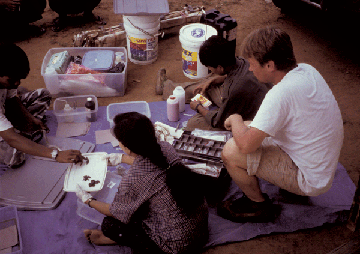
|
|||
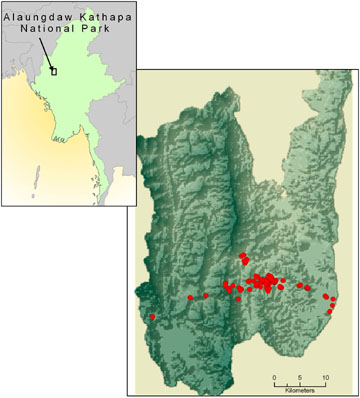
|
The first survey site of the Project was Alaungdaw Kathapa National Park, (A.K. Park), where the field team was joined by Slowinski and Vindum. A.K. Park preserves important pristine habitat within deep valleys punctuated by low-elevation mountain ranges. Closed-canopy deciduous dipterocarp forests drape its mountains alternating with the stunted dipterocarp savanna known as Indaing forest (Blower 1985). Through the valleys of mesic evergreen forests, CAS members and the field team by elephant. The map shows some of the rugged relief of the Park and the collecting localities of the first survey transect. 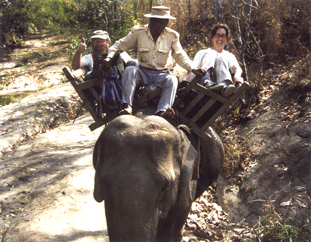 |
||
| After the training course, Vindum and two of the new field team members, Htun Win and Thin Thin, continued to make collections in Alaungdaw Kathapa National Park for an additional three weeks. These collections along with collections made during the training course resulted in a number of new species. On one of the first night surveys, Slowinski collected a new species of wolf snake, Lycodon zawi (Slowinski, Pawar, Htun Win, Thin Thin, Sai Wunna Kyi, San Lwin Oo, and Hla Tun 2001). A new species of bent-toed gecko, Cyrtodactylus slowinskii (Bauer 2002), was found to be common on the rocky banks along many of the park's rivers. | |||
|
|
While Vindum and others remained at A.K. Park, a crew from National Geographic Explorer series for television accompanied Slowinski to film his efforts to document the newly discovered Mandalay spitting cobra, Naja mandalayensis (Slowinski and Wüster 2000) for the show called "Cobra Hunt". | ||
|
Naja mandalayensis
|
|||
| The next three months
were spent preparing for the start of the survey work. A memorandum
of agreement was signed between the three collaborating institutions,
and plans were made as to where the field team would survey. A vehicle
was purchased, and field equipment and supplies were bought.
In November 1999, Slowinski and Heidi Robeck (graduate student, Harvard University) traveled with the field team to Kyaik Hti Yo Wildlife Sanctuary, Mon State, and then to the Lake Inle area of western Shan State. This trip offered the field team additional training before they started extensive surveys. After Slowinski left in November, the field team, consisting of Htun Win (team leader), Thin Thin, San Lwin Oo, Sai Wunna Kyi, and photographer Hla Tun started their survey work. They began surveying Hlawga Wildlife Park, about a forty minute drive from Yangon. The close proximity to Yangon allowed the team to try out their equipment and purchase additional needed items. |
|||
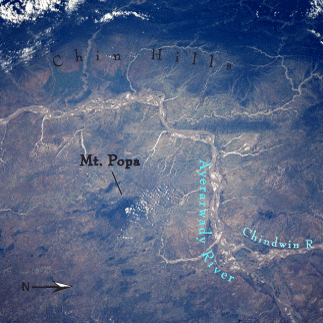 |
2000 began with the field team traveling farther afield. In January, the team headed north to Shwesettaw Wildife Sanctuary, Magwe State. From there, they headed north to Popa Mountain Park, Mandalay Division. Both areas are in the central dry zone of the Ayeyarwady plains. At Popa Mountain Park, they collected a new species of gecko (Cyrtodactylus brevidactylus Bauer 2002). This lizard is most likely endemic to Mount Popa. Shown here in a view from the International Space Station, the extinct volcano of Mount Popa (5,080 ft. elev.) is the dark vegetated peak surrounded by the arid plain of the Ayerarwady basin. Light-colored sandbars can be seen in the main channel of the Ayerarwady River.
|
||
| Two new graduate students from CAS and San Francisco State University (SFSU) began their thesis research focusing on elements of the Myanmar herpetofauna. Guin Wogan is unraveling the confused taxonomies and systematics of the ranids of Myanmar. Rhonda Lucas is focusing on the systematics and biology of the southeast Asian snake genus Ahaetulla. Molecular phylogenetic techniques are at the core of both thesis projects, relying on the use of tissue samples that accompany voucher specimens. | |||
|
In April, Slowinski, Zug, Vindum and Lucas met up with the field team. Vindum, Lucas, and Sai Wunna Kyi traveled to a small village in the Ayeyarwady delta where they spent six weeks collecting along the mangrove sloughs of the delta. Forty-seven species were recorded, including the little known vine snake, Ahaetulla fronticincta, and a number of homalopsine snakes such as Cerberus, Bitia, Cantoria, Fordonia and Gerarda. Two new species were also found in the delta area, a caecilian and a gecko. At the same time, Slowinski, Zug and the rest of the field team explored the areas in western Shan State and Mandalay Division. |
|||
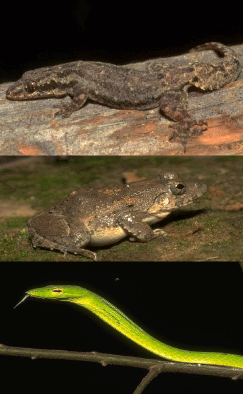 |
After the US members left, the field team revisited Alaungdaw Kathapa National Park and spent nearly two months collecting. About 60 species were collected including at least three new species. After Alaungdaw Kathapa National Park, the field team continued making collections in the central dry zone from August through November. Areas included Shin Ma Taung Reserve, Minsontaung Wildlife Sanctuary, and Shwe U Daung Wildlife Sanctuary.
|
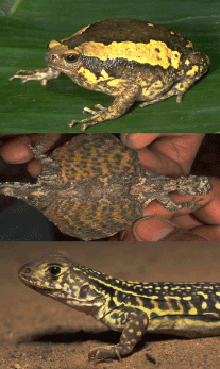 |
|
From right top, Kaloula pulcra (photo by Dong Lin), Draco maculatus, Leiolepis belliana. |
||
|
In late November, the field team joined Slowinski and Academy staff from the Department of Entomology and Department of Ornithology and Mammalogy and traveled to the coastal mountain forests in the Rakhine Yoma Elephant Range. Thirty-four amphibian and reptile species were collected. During the trip, a few days were spent surveying coastal mangroves which resulted in the capture of three species of sea snakes: Laticauda colubrina, L. laticaudata, and Hydrophis ornatus. The Academy's revolving exhibit Science Now highlighted this multi-disciplinary trip. |
||
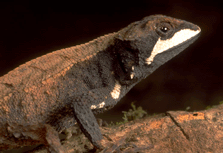 |
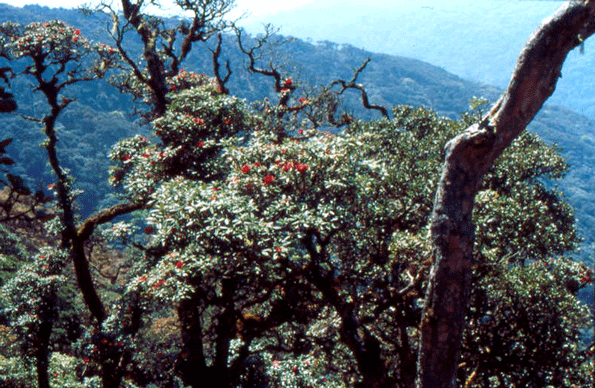 |
| Japalura planidorsata, above; rhododendrons in Chin State, right. | |
| After collected in the hot and humid Ayeyarwady Delta, the field team traveled north to Nat Ma Taung National Park in Chin State and collected on the slopes of Mount Victoria. Here, a number of the field team members saw naturally occurring ice for the first time. The team collected in the park and surrounding areas for about six weeks. Although the diversity was not high, about 35 species, a number of new species were collected. Three new lizard species were discovered (Calotes chincollium Vindum, 2003, Cyrtodactylus sp. nov. Bauer, in press, and a new species of the rare genus Ptyctolaemus Vindum, in prep.). Two other uncommon agamid lizards were collected on this trip: Japalura planidorsata and Calotes jerdoni. At least three new species of frogs were also found. | |
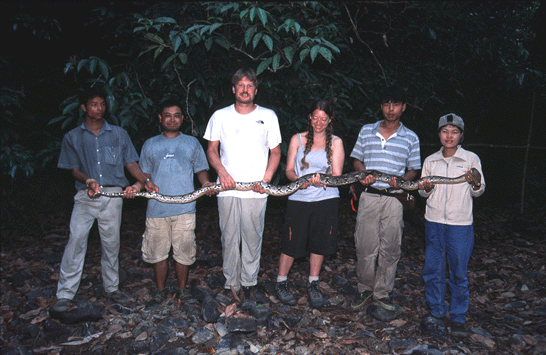 |
|
| Left to right, Awan Khwi Shein, Kyi Soe Lwin, Slowinski, Wogan, HtunWin, Thin Thin carrying Python | |
| In mid-April, Slowinski returned to Myanmar with Guin Wogan. They joined the field team and went back to the Rakhine Yoma Elephant Range because the forest had looked very promising on the previous trip. This trip, like the previous trip, yielded only about 33 species, but the composition was different. A number of new species were collected including a new toad (Bufo crocus Wogan 2003), two new species of geckos (Cyrtodactylus n. sp. Bauer, in press) and several new frog species. | |
| After returning to Yangon, in early May, the team had a short vacation, then returned to the Rakhine Yoma Elephant Range in June. In early July, they traveled to northern Rakhine State. Again, the number of species was not very diverse, only 42 species, but a number of different species were found including two new tree frogs (Chirixalus punctatus Wilkinson 2003 and a new Rhacophorus n. sp. Wilkinson, in prep.) and a possible new lizard. Combining the collections from Rakhine State, a total of 73 species have been recorded. |  |
| Chirixalus punctatus | |
|
|
|
|
| Year Four (2003) | ||
| This year started with the field team heading south into Tanintharyi Division to the Tavoy area. This was the team's first visit to the southern coastal Myanmar, and a number of species collected here represent the first records for the country. | ||
|
In late January, basic equipment for establishing a natural history museum was sent by cargo ship to Yangon. CAS donated supplies such as glass jars and lids, shelving units, books, journals and computers for the newly established Myanmar Biodiversity Museum located in Hlawga Wildlife Park outside of Yangon. In February, Vindum returned to help unpack the shipping container filled with museum supplies. Unfortunately, the ship carrying the container broke down in Singapore and didn't arrive until after Vindum returned to CAS. |
||
| In March and April, the field team traveled to Kachin State to survey Hukaung Valley Wildlife Sanctuary and Pidaung Wildlife Sanctuary. The Pidaung Wildlife Sanctuary, established in 1918 and the oldest sanctuary in Myanmar, lies just west of the city of Myitkyina in northern Myanmar and preserves rolling hills and valleys vegetated with evergreen forests and grasslands (Scott 1989). Although impacted by agricultural activities, it still promises to be biogeographically interesting. | ||
|
The new museum collection will house many of the specimens collected by the survey. Daw Thin Thin, one of the field team members, will curate the new collection. The building of the collection space was the subject of a Science Now exhibit at CAS.
|
||
| Here, Htun Win and Kyi Soe Lwin hang the sign for the herpetological collections. | ||
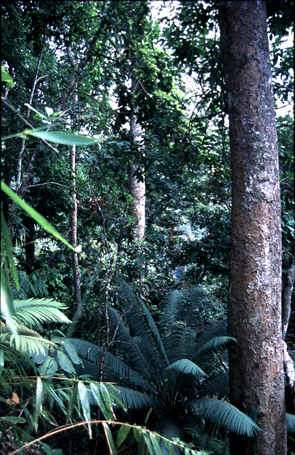 |
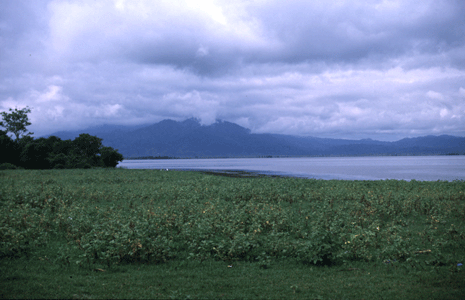 |
|
| Indawgyi Lake Wildlife Sanctuary, Kachin State: right, understory; left, lake; bottom, field team examines a lizard. | ||
|
The rest of trip, the field team, Vindum, Wogan and Wilkinson conducted the first herpetological survey in the newly established Indawgyi Lake Wildlife Sanctuary in Kachin State. A surprisingly high diversity (75 species) was encountered, with potentially 12 new species. |
||
| At the conclusion of the Indawgyi Lake trip, Wogan and Thin Thin designed and implemented a long-term amphibian and reptile monitoring program for Hlawga Wildlife Park. | ||
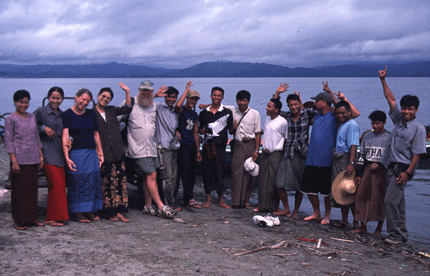 |
||
| On the shore of Indawgyi Lake, the field participants pose for a group photo. | ||
|
The field team spent July and the first half of August surveying the mountains of northern Chin State. Again, the collection yielded a number of potentially new species of lizards. In the latter part of August and the end of September, the team flew to eastern Shan State to survey the remote Wildlife Refuges of Pa-Sa and Loimwe. The last two months of the project (November and December) will be spent in the southern portion of Taninthary Division. We are certain that these collections will contain new records for the country. All these areas are newly sampled areas that have helped increased our sampling of new habitats and ecoregions. |
||
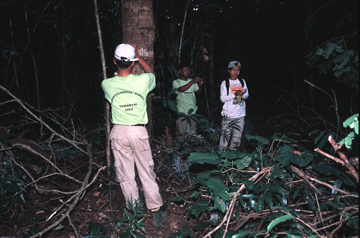 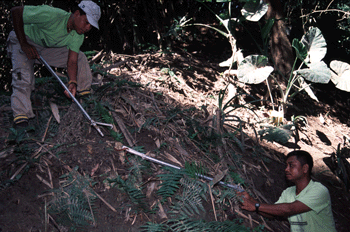 |
| Field team at work: left to right, Htun Win, Kyi Soe Lwin, Thin Thin in forest; Htun Win and Kyi Soe Lwin catching a snake. |
| Progress Report | |
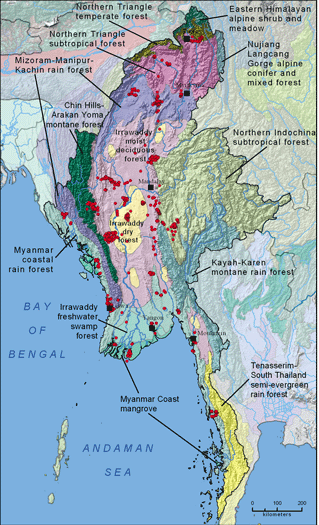 |
Based on the scientific literature, museum collection
records, and survey results, the Project has compiled a Checklist
of known species to occur in Myanmar. As of the beginning of 2003,
the Project has vouchered 174 species, 50% of the known herpetofauna,
including 14 newly described species. In additional to the new species,
another 42 are awaiting description or are in the process of being
described. Close to 11,000 voucher specimens have been cataloged among the three collaborating institutions, CAS, USNM and the newly established Myanmar Biodiversity Museum (MBM). They are being utilized in a number of research studies and form the foundation for understanding the rich fauna of the country. We have sampled in 12 of 20 ecoregions as defined by WWF that are within the country, including:
The scientific results of the Project are still being analyzed and studied by Project members and colleagues. The Publications page lists the scientific publications that have resulted directly from the survey work, and we expect many additions as research progresses.
|
| Future |
| CAS is planning to bring the Myanmar
Field Team to the Academy for a study course which will focus on: 1) curation techniques so that the newly established Myanmar Biodiversity Museum collections can be maintained; and 2) research and preparing the results for publication, so that our Myanmar colleagues can confidently carry out and publish original research in internationally peer-reviewed scientific journals. |
| Currently, we are applying for new funding to continue the project that will focus on the unsurveyed mountainous border areas of Myanmar. |
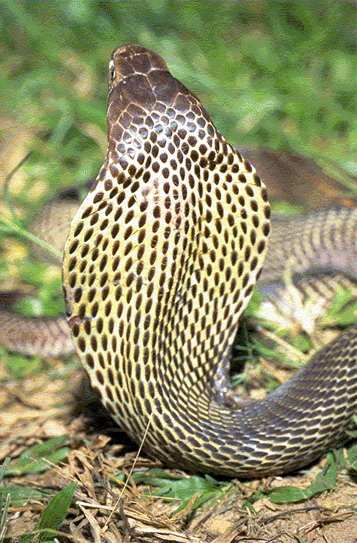


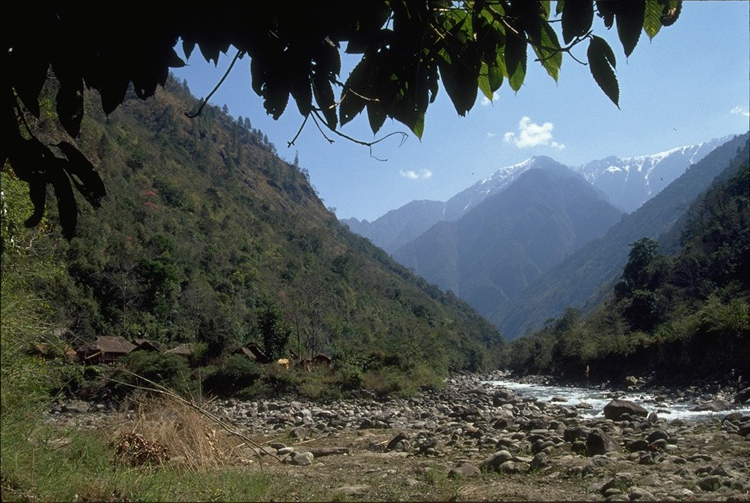
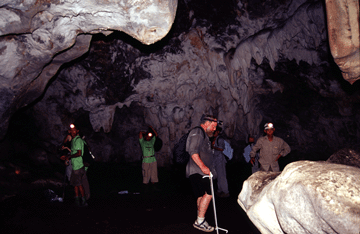
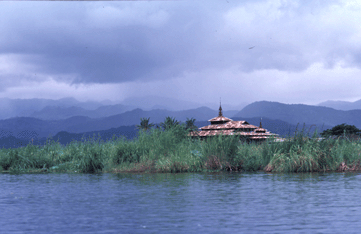
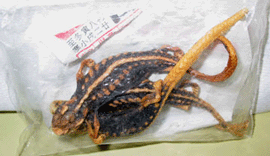
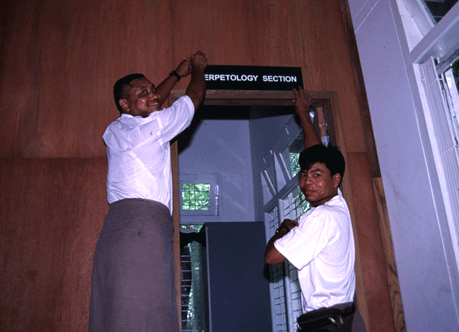 Wogan, Jeffery Wilkinson and Vindum returned to Myanmar in late
April. The first portion of the trip involved organizing the Herpetology
Section of the Myanmar Biodiversity Museum. With the help of the
field team and others, collection and library shelves were installed.
Library books were unpacked and organized, and the first jars of
specimens were placed on the collection shelving.
Wogan, Jeffery Wilkinson and Vindum returned to Myanmar in late
April. The first portion of the trip involved organizing the Herpetology
Section of the Myanmar Biodiversity Museum. With the help of the
field team and others, collection and library shelves were installed.
Library books were unpacked and organized, and the first jars of
specimens were placed on the collection shelving. 